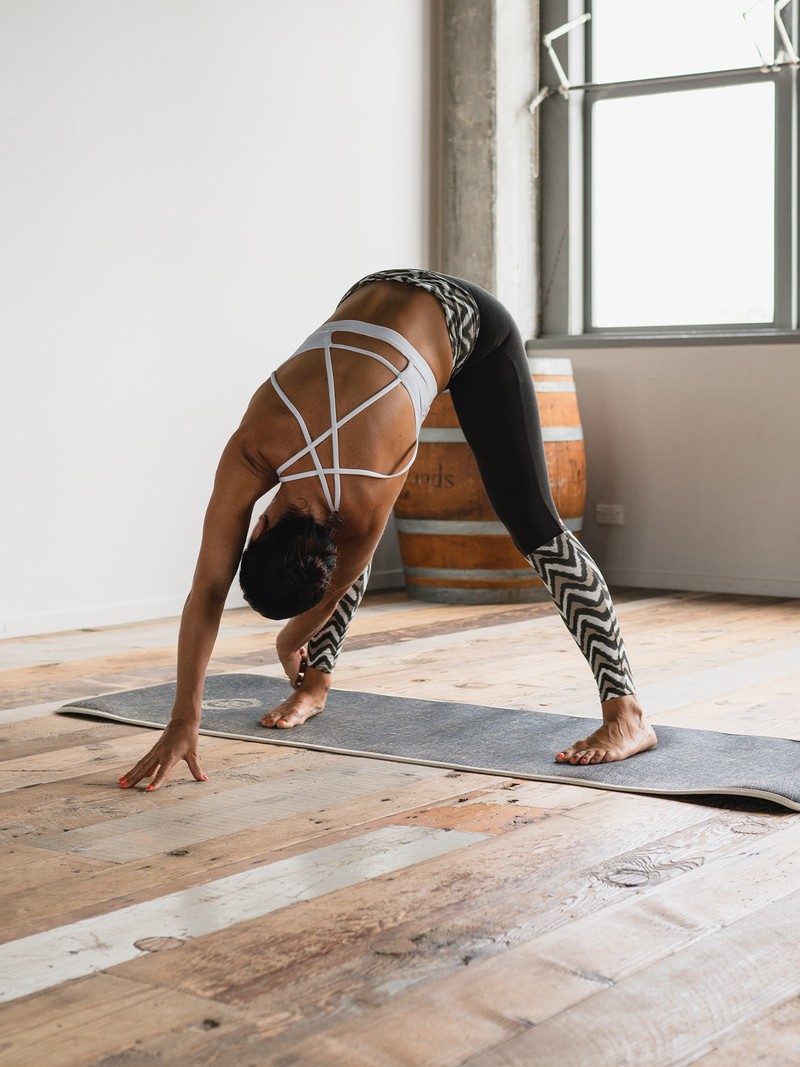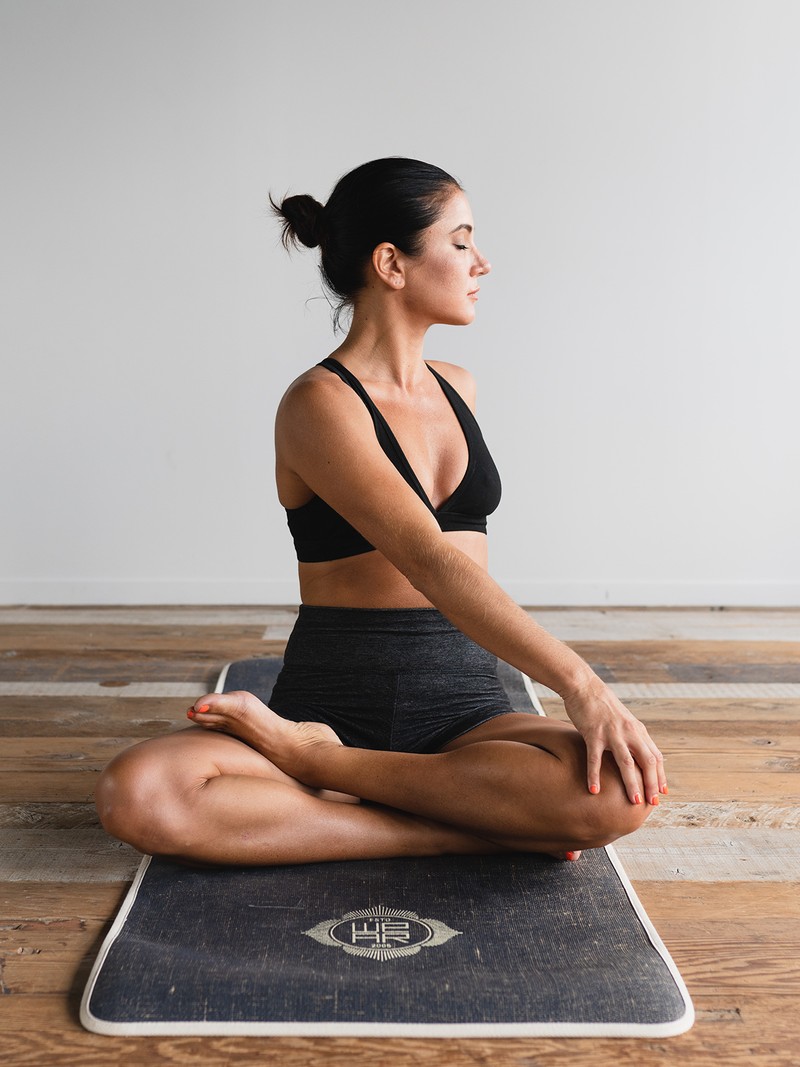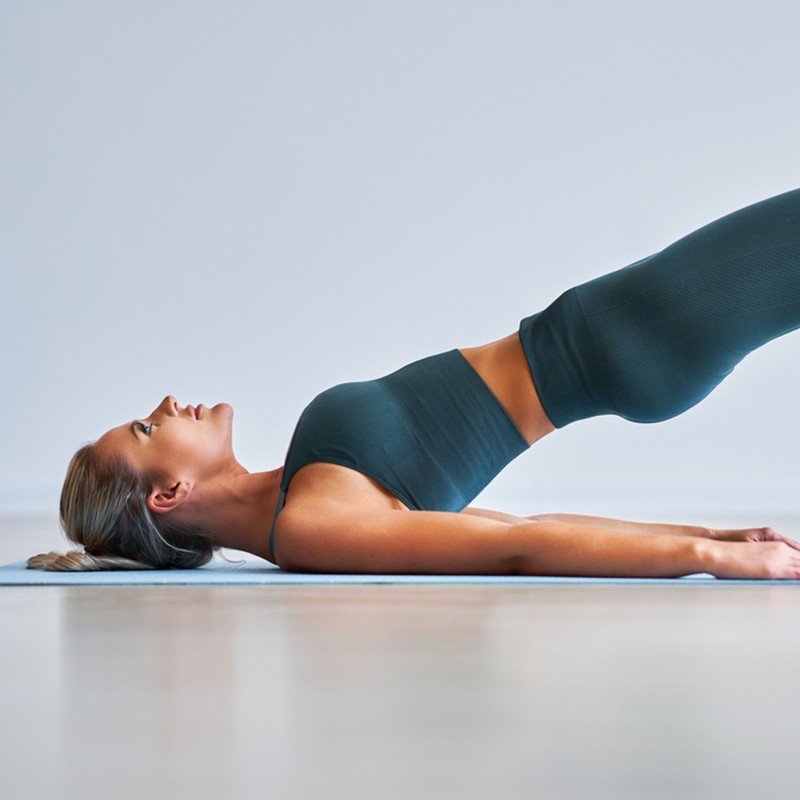Yoga Vs. Pilates: Which One Is Right For You?

YOGA...
Focuses On The Breath
“Yoga is all about unifying body and mind, whereas Pilates just focuses on the body. A large part of this comes down to the breath. In yoga, breathing is central to the practice – it guides the movements. In fact, yoga can be understood as a kind of meditation in which you also take on different postures that alternate between tension and relaxation. In Pilates, there’s no spiritual context behind the breathing – the breathing merely dictates the rhythm of the movements. As opposed to deep abdominal breathing in yoga, Pilates uses lateral chest breathing, which enables more precision and focus.” – Yesim Yuva, yoga teacher & founder of Yuva Yoga Life
Is Great For The Mind
“Due to its emphasis on the breath, yoga is an incredible way to relieve stress. Linking the movement with the breath as you work through a flow does wonders for the mind, while also building a flexible but strong body. If you’re looking for a form of exercise that will burn hundreds of calories, yoga isn’t it – instead, think of it as longevity training, where you’re future-proofing your body against injury and helping it to move more efficiently.” – Minnie Samengo, yoga instructor
Offers Something For Everyone
“The beauty of yoga is that there are so many types that suit everyone, from beginners to those looking for a more intense workout. Hatha yoga is a great place start. It’s a slower-paced form of yoga where you hold poses for three to five breaths. It builds strength and flexibility but focuses more on controlled breathing, posture and relaxation. Vinyasa or power yoga is a faster-paced style where you move directly from one pose to the next. This type of yoga will likely raise your heart rate more – it’s more suited to intermediate and advanced yogis, but it can depend on the teacher’s style. Yin yoga, meanwhile, is suitable for all levels, and is a great way to complement other forms of training. Here, you hold poses for three to five minutes, which can significantly enhance flexibility and aid recovery. Yin is a good class for gym goers who may not necessarily be yogis.” – Minnie
Can Be Spiritual
“Yoga is a practice that originated in ancient India around 5,000 years ago with the aim of harmonising mind and body, and connecting people with a higher consciousness or spirituality. It was intended to be a way of life, but today the focus is mainly on the physical practice, with many people only seeing yoga as a way to improve flexibility and strength. That can be a by-product of a regular yoga practice, but it’s actually so much more than that. Pilates, meanwhile, is much more functional and less holistic than yoga. When you start to include breathwork and meditation, you create space to turn down the volume of the inner narrative, listen more deeply, and align with your deeper mental and emotional needs.” – Abby McLachlan, Pilates instructor & founder of East of Eden
PILATES...
Will Build A Leaner Body
“As Joseph Pilates himself once said, ‘After ten hours of Pilates, you’ll feel the difference, after 20 hours you’ll see the difference, and after 30 hours you’ll have a new body. Pilates is a body conditioning technique – it improves muscle tone and can dramatically change your body shape if practised regularly. By working muscles at a deep layer, as well as muscles that are often under-used, Pilates is extremely effective at toning. Of course, it depends on how often you’re practising and the intensity, but if you’re pushing yourself and putting in maximum effort, you will see results. You can, quite literally, shed a layer or two off your body. If you want to see results with Pilates, you need to be honest with yourself. Is your workout really making you work? Are you breaking a sweat? Can you feel the intensity of your workout or are you breezing through it?” – Korin Nolan, Pilates instructor & founder of Power Pilates UK
Is More Fluid
“Both yoga and Pilates help to improve flexibility, overall body strength and mobility, as well as working with the breath. The main difference is that yoga tends to hold stretches and positions (some of which are very physically demanding, such as backbends and handstands), whereas Pilates is about continual movement and focuses on building a strong core to work from.” – Korin
Can Support Recovery
“Joseph Pilates created the Pilates system in the 1920s as a way to rehabilitate bedridden soldiers during World War I. It has come a long way since then, but is still used to build strength, particularly after an injury. Classes typically move slowly enough so that students can pay careful attention to what they’re doing, and exercises can be easily modified. Pilates considers how the body functions as a whole by fixing muscular imbalances, improving posture, teaching good movement patterns and strengthening the deep stabilising muscles around our pelvis and spine, which tend to be the culprit behind lower back and groin pain.” – Minnie
Uses More Equipment
“In a yoga class you may well use a bolster or block, but in Pilates equipment is to intensify a workout. For example, mat Pilates is the most basic form – it’s done on a mat with minimal equipment. It’s great for beginners as you’ll learn how to perfect fundamental moves and techniques. In classical Pilates, you combine mat work with added apparatus to move the body through its full range of movement, while Reformer classes are done on a reformer machine, making it the most dynamic style of Pilates. The machine adds resistance to exercises, making it more intense so you really feel the burn.” – Minnie
Is Great If You’re Pregnant
“Pilates is great for pregnancy as it helps keep the body strong, supple, and releases pregnancy-related aches and pains. Plus, it helps prepare you for birth. The breathing technique is also fantastic for labour. Traditional yoga classes that take you into deep stretches may not be suitable for pregnancy as the body releases the hormone relaxin when pregnant, which makes our skeletal frame less supported, so you should be careful to avoid over-stretching. At the same time, you shouldn’t start doing Pilates when pregnant. If your body is used to doing it, then it’s fine to continue throughout pregnancy, alongside some modifications, but unless it’s a specific prenatal class, this isn’t the time to be aiming for a six pack.” – Korin

For more information visit MinnieSamengoYoga.com, YuvaYogaLife.com, KorinNolan.com and EastOfEden.uk. You can also follow @MinnieSamengoYoga, @KorinNolanPilates, @EastofEden17 and @Yesim_Yuva on Instagram.
DISCLAIMER: Features published by SheerLuxe are not intended to treat, diagnose, cure or prevent any disease. Always seek the advice of your GP or another qualified healthcare provider for any questions you have regarding a medical condition, and before undertaking any diet, exercise or other health-related programme.
DISCLAIMER: We endeavour to always credit the correct original source of every image we use. If you think a credit may be incorrect, please contact us at info@sheerluxe.com.


